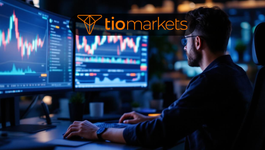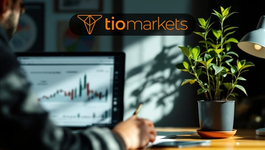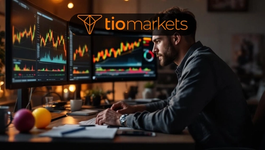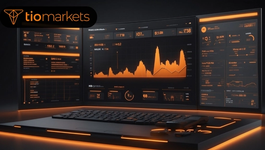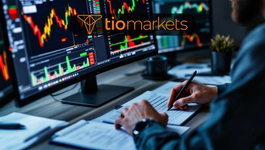Advertencia de Riesgo: Los CFDs Son Instrumentos Complejos Y Comportan Un Alto Riesgo De Perder Dinero Rápidamente Debido Al Apalancamiento. El 37,80% De Las Cuentas De Inversores Minoristas Pierden Dinero Al Operar Con CFDs. D
The DE40 Index: A Comprehensive Guide for Traders and Investors
BY TIO Staff
|junio 28, 2024The DE40 index, also known as the DAX 40, is a prominent benchmark in the European financial markets. It comprises the 40 largest companies listed on the Frankfurt Stock Exchange, making it a crucial indicator of German economic health.
Understanding the DE40 index is essential for traders and investors aiming to navigate the complexities of the European markets. Whether you're a seasoned investor or a novice trader, this comprehensive guide will provide valuable insights into the DE40 index, highlighting its significance and offering practical strategies for trading.
Keep reading to learn all about the DE40 index.
What is the DE40 Index?
The DE40 index, also known as the DAX 40, is a prominent benchmark in the European financial markets. It traces its origins back to July 1, 1988, when it was introduced by the Frankfurt Stock Exchange (Frankfurter Wertpapierbörse) as a successor to the previous German equity index, the Börsen-Zeitung.
From its inception, the DE40 index was designed to represent the performance of the 30 largest and most liquid companies listed on the Frankfurt Stock Exchange. This has since changed to include 40 of the largest and most liquid companies since September 2021. These companies are selected based on strict criteria, including market capitalization, stock exchange turnover, and sector representation.
Over the years, the DE40 index has evolved to become a crucial indicator of the German economy's health and a benchmark for investors and traders worldwide. Its composition reflects the strength and diversity of German industries, encompassing sectors such as automotive, banking, chemicals, pharmaceuticals, and technology.
The DE40 index plays a significant role in the global financial landscape, serving as a barometer for the performance of the German stock market and the broader European markets. Its movements are closely monitored by investors, analysts, and policymakers alike, as it provides insights into the economic conditions and investor sentiment within one of the world's largest and most influential economies.
Composition of the DE40 Index
The DE40 index comprises the 40 largest and most liquid companies listed on the Frankfurt Stock Exchange, representing the backbone of the German economy. These companies span various sectors, including automotive, banking, pharmaceuticals, technology, and consumer goods, among others.
The index is dominated by well-established German giants, such as Volkswagen, Siemens, Allianz, and Deutsche Telekom. However, it also includes multinational corporations with a significant presence in Germany, like Adidas, SAP, and Bayer.
The automotive sector holds a substantial weight in the DE40 index, with companies like Volkswagen, Daimler, and BMW playing a pivotal role. This sector's performance is closely tied to the overall health of the German manufacturing industry and global demand for German-made vehicles.
The financial sector is another major contributor to the index, with banks like Deutsche Bank and Commerzbank, as well as insurance companies like Allianz and Munich Re, representing a significant portion of the index's market capitalization.
The technology sector is also well-represented, with companies like SAP, Infineon Technologies, and Siemens contributing to the index's performance. These companies are at the forefront of innovation and play a crucial role in driving the German economy's technological advancement.
Other sectors, such as pharmaceuticals (Bayer, Merck), consumer goods (Adidas, Beiersdorf), and industrials (ThyssenKrupp, Continental), also have a notable presence in the DE40 index, reflecting the diversified nature of the German economy.
The market capitalization of the companies in the DE40 index varies significantly, with some of the largest companies, such as SAP and Siemens, having a market capitalization in the hundreds of billions of euros, while smaller companies may have a market capitalization in the tens of billions.
The performance of each company in the DE40 index has a direct impact on the overall index's movement. Companies with larger market capitalizations and higher weightings in the index have a more substantial influence on their performance. Consequently, traders and investors closely monitor the financial results, news, and developments of these major companies to gauge the potential impact on the DE40 index.
How the DE40 Index is Calculated
The DE40 index is calculated using the free-float market capitalization method, which takes into account the total market value of the shares that are readily available for trading. This method ensures that the index accurately reflects the investable portion of each constituent company.
The free-float market capitalization of each company is calculated by multiplying the share price by the number of outstanding shares available for public trading. Shares held by governments, corporations, or other entities that are not readily available for trading are excluded from this calculation.
Once the free-float market capitalization of each component company is determined, a weighting factor is applied to each stock based on its relative size within the index. This weighting system ensures that larger companies have a greater influence on the index's performance, while smaller companies have a lesser impact.
The DE40 index is capitalization-weighted, meaning that the weight of each component stock is proportional to its free-float market capitalization. Companies with larger market capitalizations will have a greater influence on the index's movement, while smaller companies will have a lesser impact.
To maintain the index's accuracy and relevance, adjustments are made periodically to account for corporate actions such as stock splits, mergers, acquisitions, and share buybacks. These adjustments ensure that the index remains representative of the overall market and reflects the true value of the constituent companies.
Furthermore, the DE40 index is reviewed and rebalanced quarterly to ensure that it continues to accurately represent the performance of the 40 largest and most liquid companies listed on the Frankfurt Stock Exchange. Companies that no longer meet the inclusion criteria may be removed from the index, while new companies that qualify may be added.
Factors Influencing the DE40 Index
The performance of the DE40 index is influenced by a multitude of factors, both domestic and global. Economic indicators, geopolitical events, and key drivers all play a crucial role in shaping the index's trajectory. Understanding these factors is essential for traders and investors seeking to make informed decisions.
Economic indicators are among the most significant drivers of the DE40 index. Germany's gross domestic product (GDP) growth, industrial production, and consumer confidence levels directly impact the performance of the companies listed on the index. Positive economic data often translates into bullish sentiment, driving the index higher, while negative indicators can lead to a bearish market sentiment and a decline in the index's value.
Geopolitical events, both within Germany and across the globe, can also significantly influence the DE40 index. Political instability, trade tensions, and international conflicts can create uncertainty and volatility in the markets, affecting the index's performance. Investors closely monitor geopolitical developments, as they can have far-reaching implications for the companies listed on the index, particularly those with global operations and supply chains.
Key drivers specific to the German economy and the companies within the DE40 index also play a pivotal role. These drivers may include factors such as interest rates set by the European Central Bank (ECB), currency fluctuations, and changes in regulatory environments. Additionally, sector-specific developments, such as technological advancements or shifts in consumer preferences, can impact the performance of individual companies and, consequently, the overall index.
Traders and investors must remain vigilant and closely monitor these factors to navigate the complexities of the DE40 index successfully. By staying informed and adapting to changing market conditions, they can capitalize on opportunities and mitigate potential risks associated with trading and investing in this influential European benchmark.
Trading Strategies for the DE40 Index
Technical analysis is a powerful tool for traders looking to capitalize on the price movements of the DE40 index. By studying historical price charts and identifying patterns and trends, traders can make informed decisions about when to enter or exit trades. Some popular technical indicators used in DE40 index trading include moving averages, the Relative Strength Index (RSI), and Bollinger Bands. These indicators can help traders identify potential support and resistance levels, as well as overbought and oversold conditions.
Fundamental analysis is another essential approach for trading the DE40 index. This involves analyzing the underlying economic and financial factors that drive the performance of the companies within the index. Traders can examine macroeconomic indicators such as GDP growth, inflation rates, and interest rates, as well as company-specific factors like earnings reports, management changes, and industry trends. By understanding the fundamental drivers of the DE40 index, traders can make more informed decisions about the potential future performance of the index.
Sentiment analysis is also a powerful tool for gauging market sentiment and investor psychology. By monitoring news headlines, social media chatter, and analyst reports, traders can gain insights into the overall sentiment surrounding the DE40 index and its constituent companies. Positive sentiment can indicate potential buying opportunities, while negative sentiment may signal potential selling pressure. Additionally, sentiment analysis can help traders identify potential market overreactions, allowing them to take contrarian positions when appropriate.
DE40 Index vs. Other Major Indices
The DE40 index, while a prominent benchmark in Europe, is often compared to other major global indices. Understanding how it differs from and aligns with these indices can provide valuable insights for traders and investors seeking to diversify their portfolios and capitalize on global market trends.
One key similarity between the DE40 and indices like the S&P 500, FTSE 100, and Nikkei 225 is their focus on large, well-established companies. These indices aim to represent the performance of the most significant players in their respective markets, serving as barometers for the overall health of their economies.
However, the DE40 index differs in its composition, as it exclusively comprises German companies listed on the Frankfurt Stock Exchange. This concentrated exposure to the German market can be both a strength and a weakness. While it offers a focused investment opportunity in one of Europe's economic powerhouses, it also means that the index's performance is heavily influenced by Germany's domestic and international policies, as well as its trade relationships.
In contrast, indices like the S&P 500 and FTSE 100 have a more diversified portfolio, spanning multiple sectors and countries, which can potentially mitigate the impact of localized economic or political events.
Moreover, the interconnectedness of the global economy means that events in one region can have ripple effects across markets. A slowdown in the Chinese economy, for example, could impact German exporters and, consequently, the performance of the DE40 index. Conversely, a strong US economy could boost consumer spending and benefit companies in the S&P 500.
Traders and investors should carefully consider these similarities, differences, and global market influences when constructing their portfolios. Diversifying across multiple indices can help mitigate risk and capitalize on various market opportunities while maintaining exposure to the DE40 index can provide a focused investment in the German economy and its key industries.
Historical Performance of the DE40 Index
The DE40 index has a rich history that dates back to its inception in 1988. Over the years, it has witnessed remarkable growth, punctuated by periods of volatility and market fluctuations. Analyzing the historical performance of the index can provide valuable insights for traders and investors seeking to navigate the German and European markets.

Past Trends
The DE40 index has exhibited several notable trends throughout its existence. One prominent trend has been its overall upward trajectory, reflecting the strength and resilience of the German economy. However, this upward trend has been interspersed with periods of volatility and market corrections, often influenced by global economic events and geopolitical factors.
Significant Events
The DE40 index has been impacted by various significant events over the years. The global financial crisis of 2008-2009 was a major event that caused a significant downturn in the index, reflecting the interconnectedness of global markets. The European debt crisis that followed in the early 2010s also had a profound impact, leading to increased volatility and uncertainty in the European markets.
On the other hand, events such as the introduction of the euro in 1999 and Germany's strong economic recovery after the global financial crisis have contributed to the index's growth and stability.
Lessons for Future Performance
By studying the historical performance of the DE40 index, traders and investors can glean valuable lessons for future market behaviour. One key lesson is the importance of diversification and risk management strategies. The index's volatility during periods of economic turmoil underscores the need for a well-balanced portfolio and effective risk mitigation techniques.
Additionally, historical data can provide insights into potential market cycles and patterns, allowing traders and investors to anticipate and prepare for potential market movements. However, it is crucial to remember that past performance is not a guaranteed indicator of future results, and market conditions can change rapidly.
Risks Associated with Trading the DE40 Index
Trading the DE40 index, like any financial instrument, carries inherent risks that investors and traders must be aware of. Understanding and mitigating these risks is crucial for successful trading and investment strategies.
Volatility Risk
The DE40 index is subject to market volatility, which can lead to significant price fluctuations. Economic conditions, geopolitical events, and investor sentiment can all contribute to increased volatility, resulting in potential losses for traders and investors.
Concentration Risk
As the DE40 index comprises the 40 largest companies listed on the Frankfurt Stock Exchange, it is heavily concentrated in the German economy. Any adverse events or economic downturns specific to Germany can have a disproportionate impact on the index's performance.
Sector Risk
The DE40 index is dominated by a few key sectors, such as automotive, financial services, and industrials. Sector-specific risks, like regulatory changes, technological disruptions, or shifts in consumer preferences, can significantly affect the performance of companies within those sectors, consequently impacting the overall index.
Currency Risk
For international investors trading the DE40 index, fluctuations in currency exchange rates can impact the value of their investments. As the index is denominated in euros, changes in the euro's value relative to other currencies can introduce additional risks.
Liquidity Risk
While the DE40 index comprises large, well-established companies, there may be instances where liquidity becomes a concern. During periods of market stress or heightened volatility, it can be challenging to enter or exit positions at desired prices.
To mitigate these risks, traders and investors should employ various risk management strategies. Diversification across different asset classes, sectors, and regions can help reduce concentration risk. Stop-loss orders and position sizing can limit potential losses from volatility. Additionally, hedging strategies, such as options or futures contracts, can protect against adverse market movements.
Regular monitoring of economic indicators, company fundamentals, and market sentiment is also crucial for identifying potential risks and adjusting trading strategies accordingly. Investors should thoroughly research and understand the companies within the DE40 index, their business models, and the risks they face.
By acknowledging and actively managing the risks associated with trading the DE40 index, traders and investors can navigate the market more effectively and increase their chances of long-term success.
Benefits of Investing in the DE40 Index
Trading the DE40 index offers several compelling benefits that should not be overlooked. Firstly, the index provides investors with a unique opportunity for diversification. By investing in the DE40, you gain exposure to the 40 largest and most influential companies in Germany, spanning various sectors such as automotive, healthcare, technology, and finance. This diversification helps mitigate the risk associated with investing in individual stocks, as the index's performance is less susceptible to the fluctuations of any single company or industry.
Another significant advantage of investing in the DE40 index is its growth potential. The companies that make up the index are well-established and have a proven track record of success. Many of these companies are global leaders in their respective industries, with strong brand recognition and innovative products or services. As the German economy continues to thrive and these companies expand their operations, the DE40 index is poised to benefit from their growth.
Moreover, the DE40 index plays a crucial role in building a balanced investment portfolio. By incorporating the index into your portfolio, you gain exposure to the German market, which can help offset potential losses in other markets or asset classes. This diversification across different markets and economies can help reduce overall portfolio risk and potentially enhance returns over the long term.
Trade The DE40 Index With TIOmarkets
TIOmarkets is a leading broker that provides traders with seamless access to global financial markets. You can trade forex, stocks, indices and commodities with leverage and low fees. Our MT4 trading platform offers advanced charting tools, real-time market data, and fast order execution speeds.
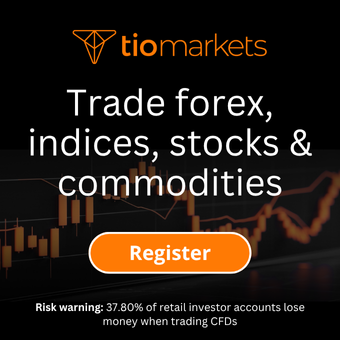
Risk Warning: CFDs are complex instruments and come with a high risk of losing money rapidly due to leverage. 37.80% of retail investor accounts lose money when trading CFDs. You should consider whether you understand how CFDs work and whether you can afford to take the high risk of losing your money.

Behind every blog post lies the combined experience of the people working at TIOmarkets. We are a team of dedicated industry professionals and financial markets enthusiasts committed to providing you with trading education and financial markets commentary. Our goal is to help empower you with the knowledge you need to trade in the markets effectively.
Related Posts

